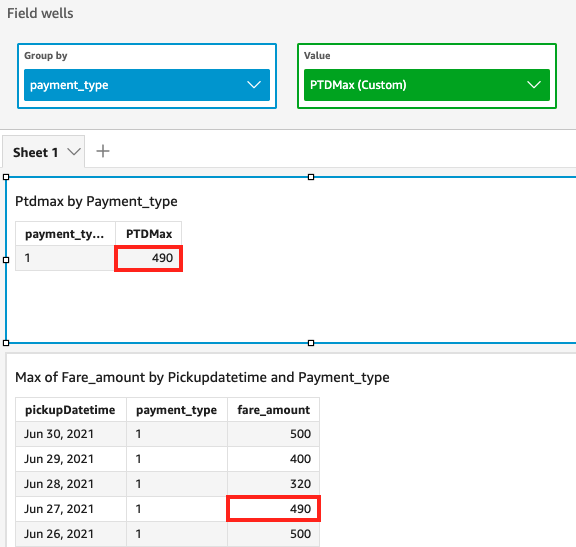periodToDateMax
The periodToDateMax function returns the maximum value of the specified
measure for a given time granularity (for instance, a quarter) up to a point in
time, relative to that point.
Syntax
periodToDateMax( measure, dateTime, period, endDate (optional))
Arguments
- measure
-
The argument must be a field. Null values are omitted from the results. Literal values don't work.
- dateTime
-
The Date dimension over which you're computing PeriodToDate aggregations.
- period
-
The time period across which you're computing the computation. Granularity of
YEARmeansYearToDatecomputation,QuartermeansQuarterToDate, and so on. Valid granularities includeYEAR,QUARTER,MONTH,WEEK,DAY,HOUR,MINUTE, andSECONDS. - endDate
-
(Optional) The date dimension that you're ending computing periodToDate aggregations. It defaults to
now()if omitted.
Example
The following example calculates the week-to-date minimum fare amount per payment type, for the week of 06-30-21. For simplicity in the example, we filtered out only a single payment. 06-30-21 is Wednesday. QuickSight begins the week on Sundays. In our example, that is 06-27-21.
periodToDateMax(fare_amount, pickUpDatetime, WEEK, parseDate("06-30-2021", "MM-dd-yyyy"))
